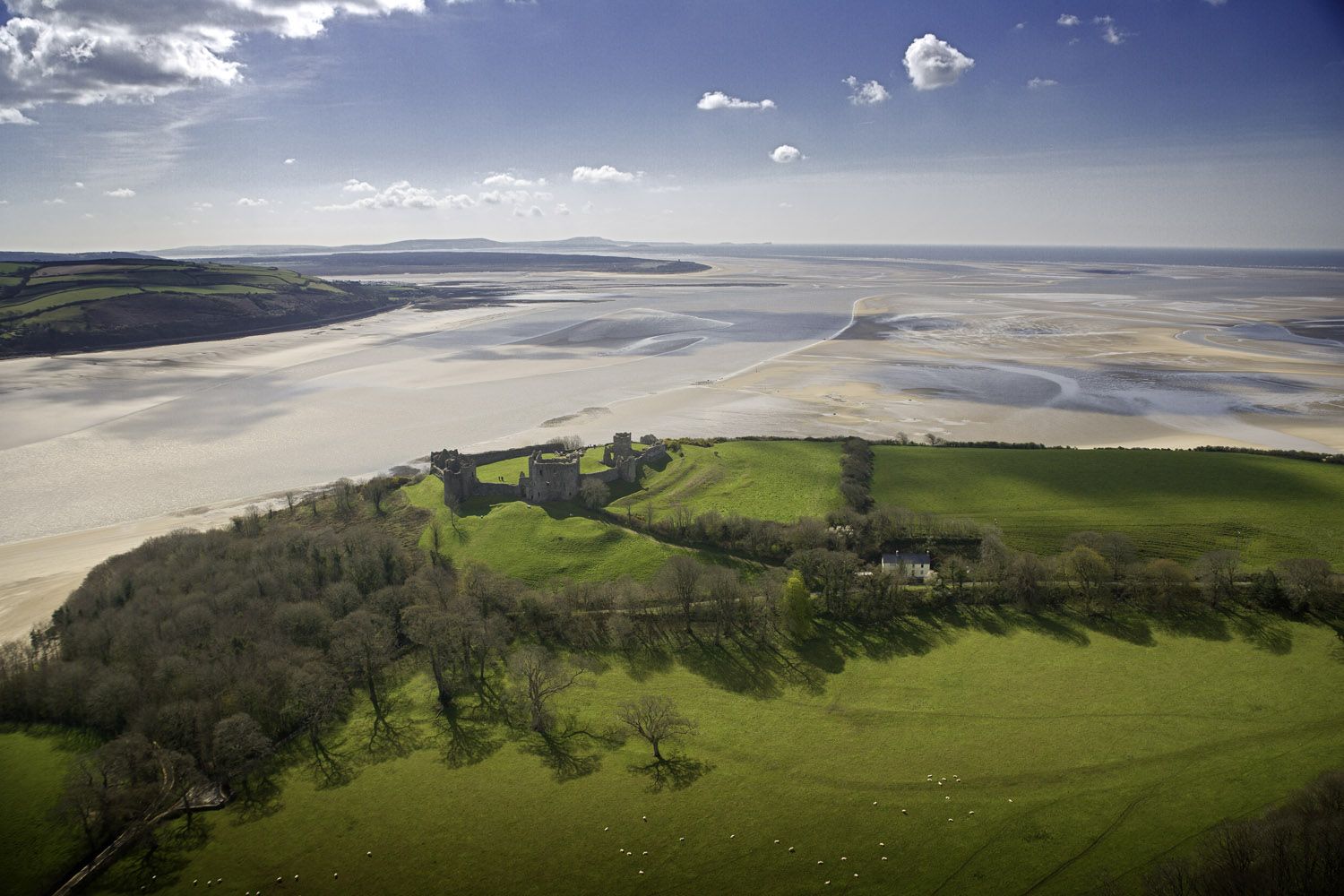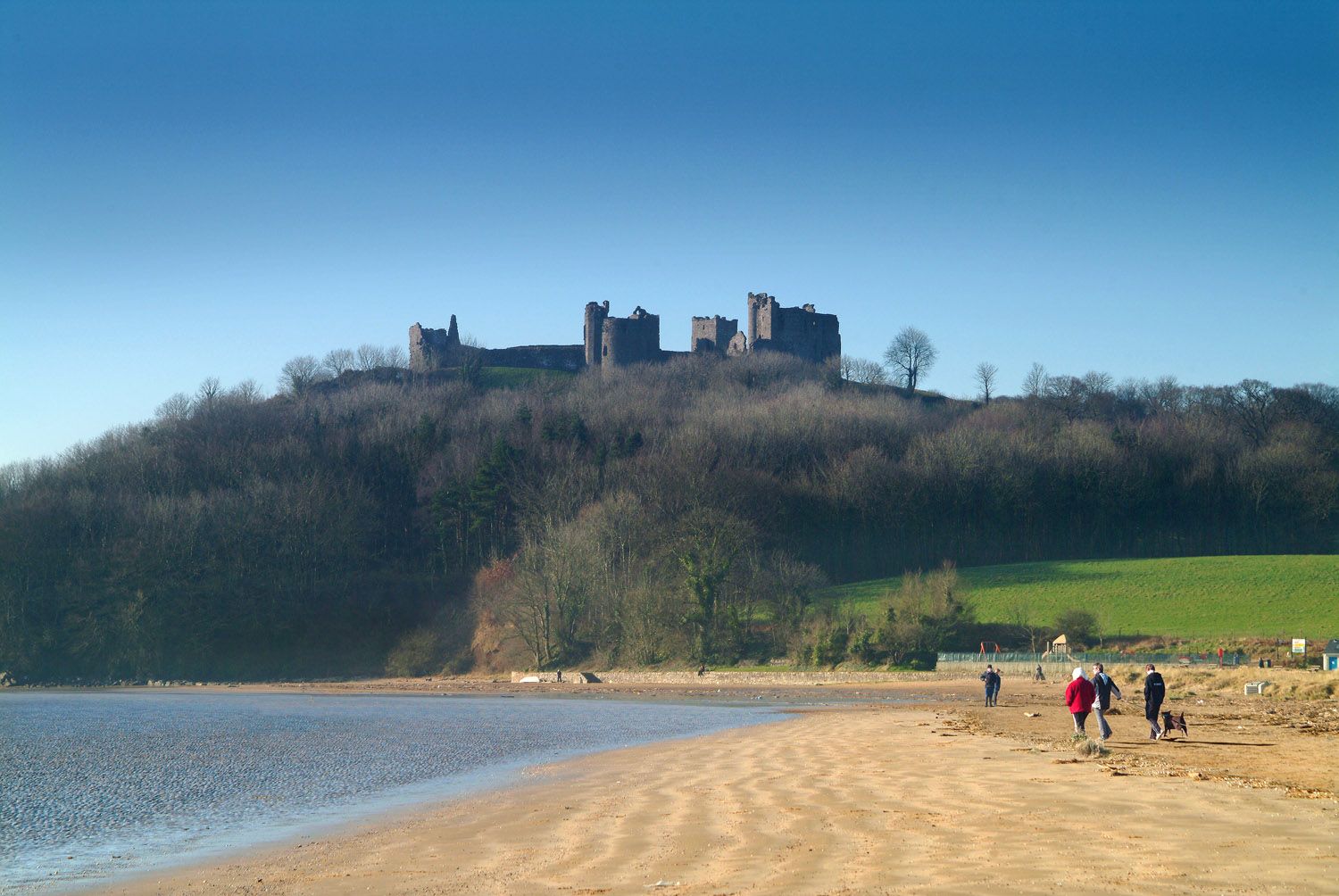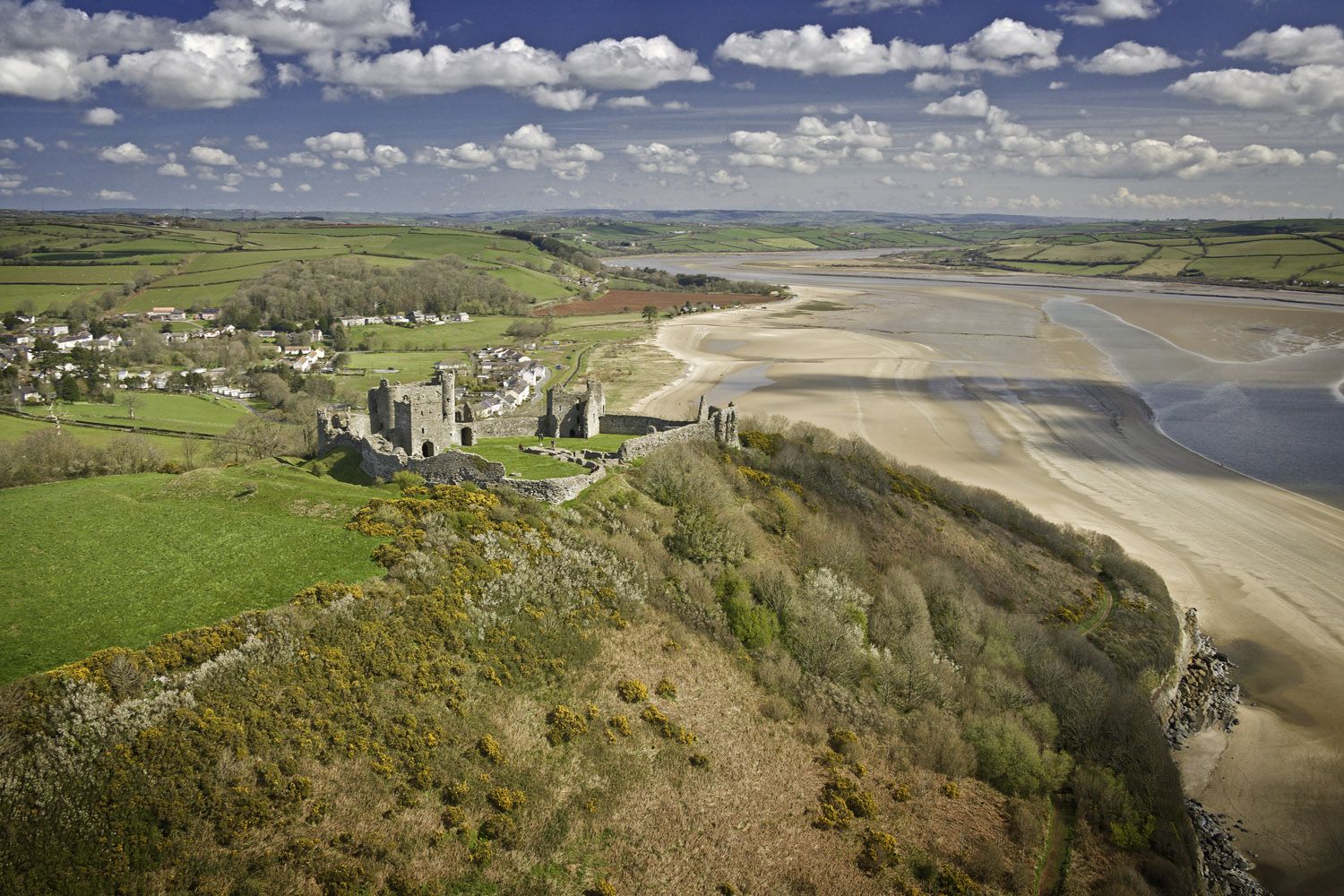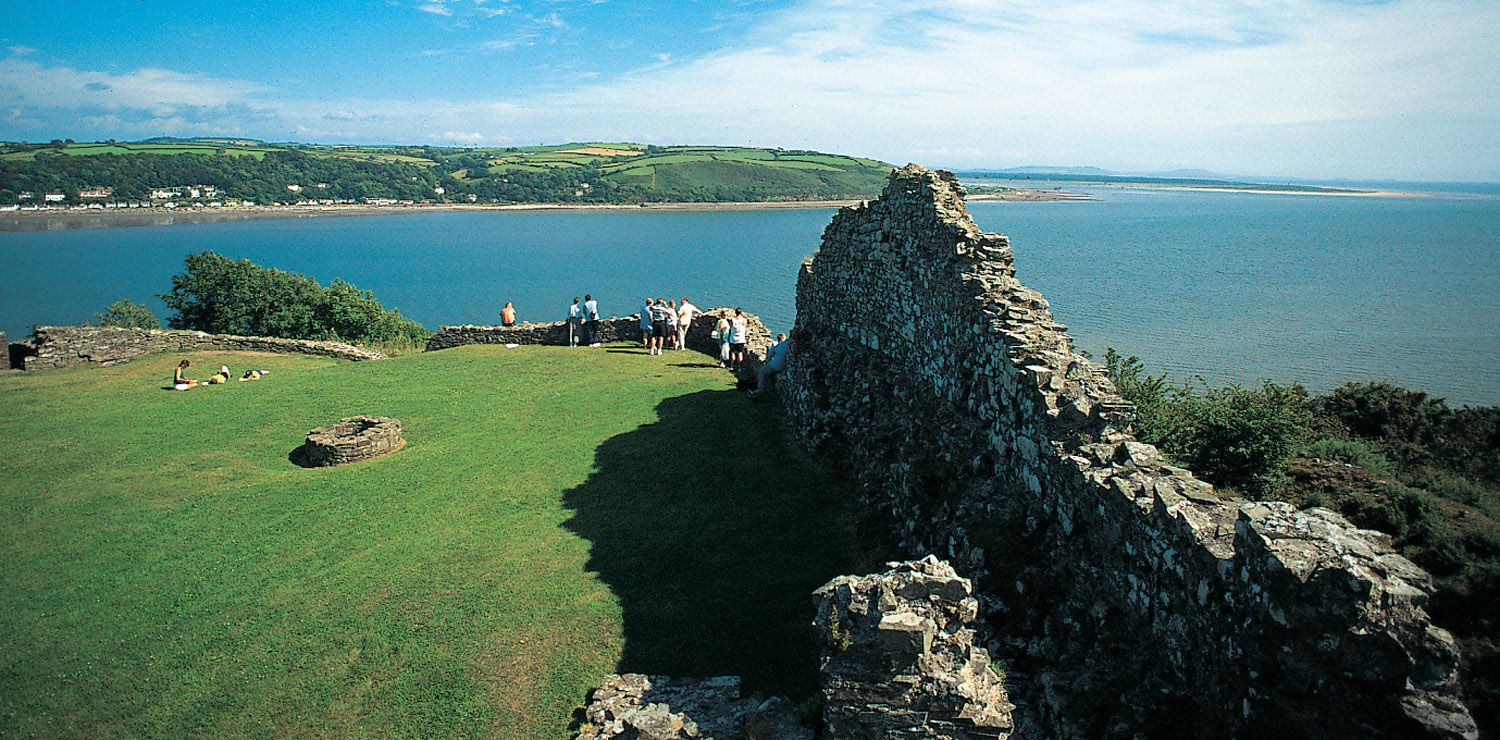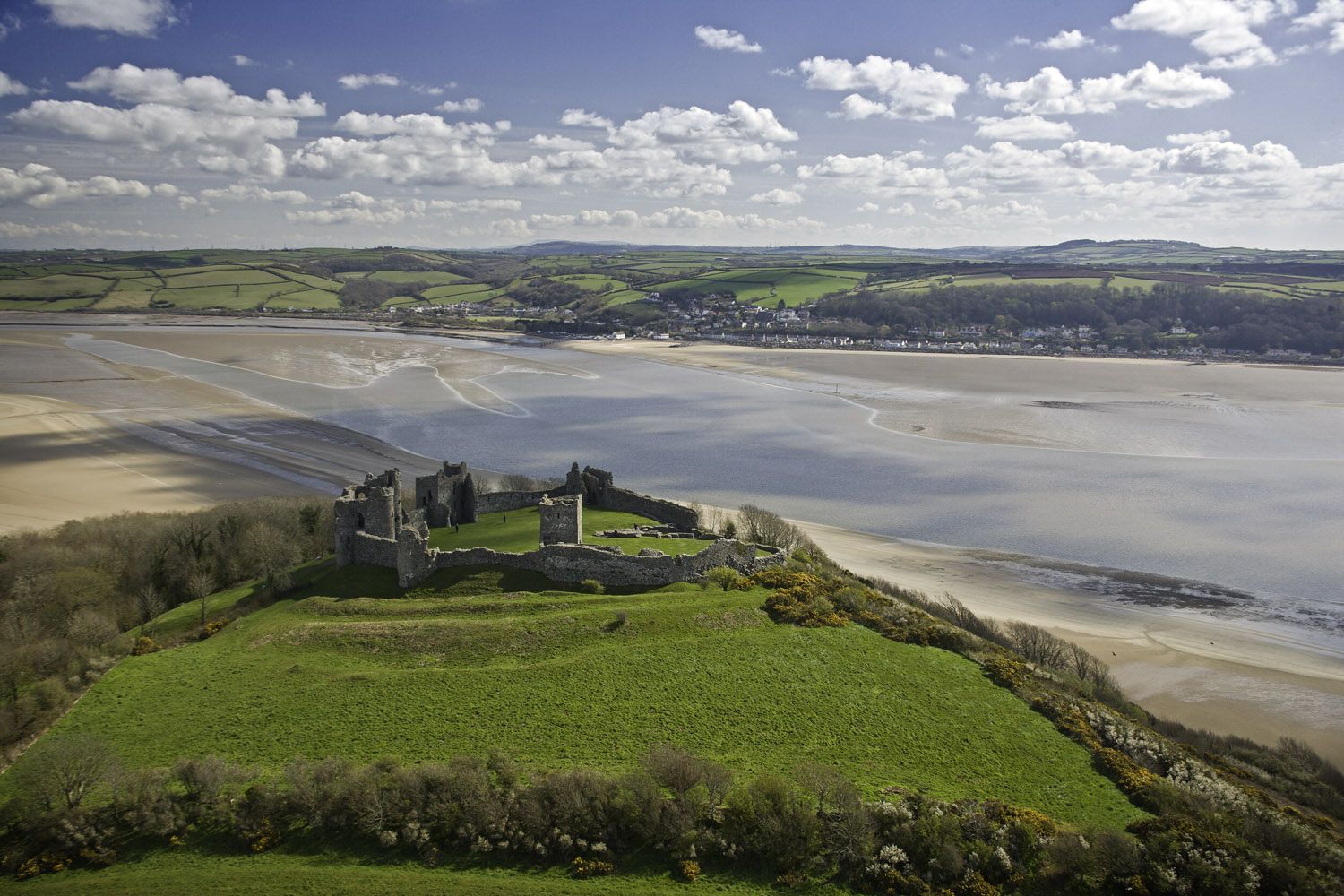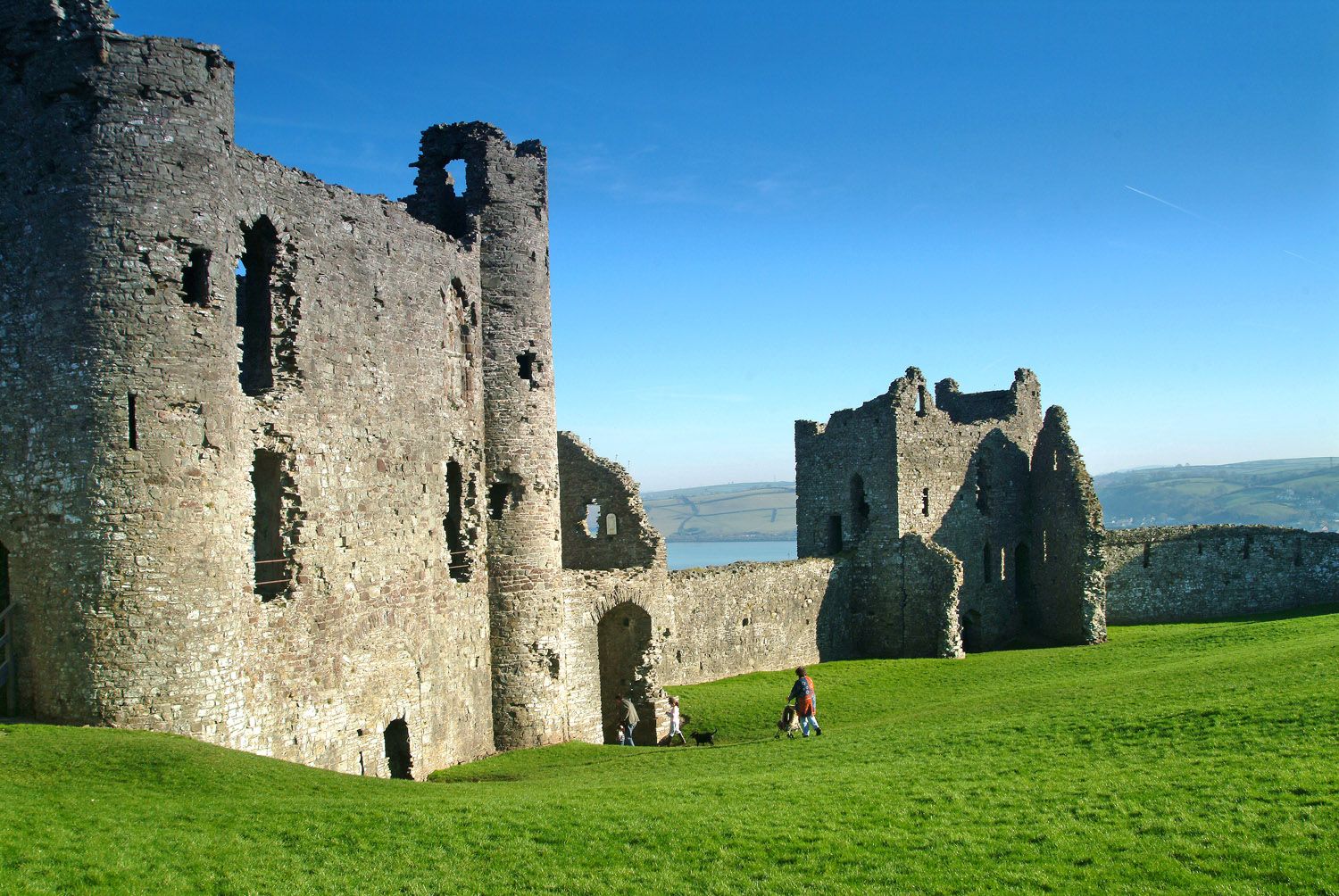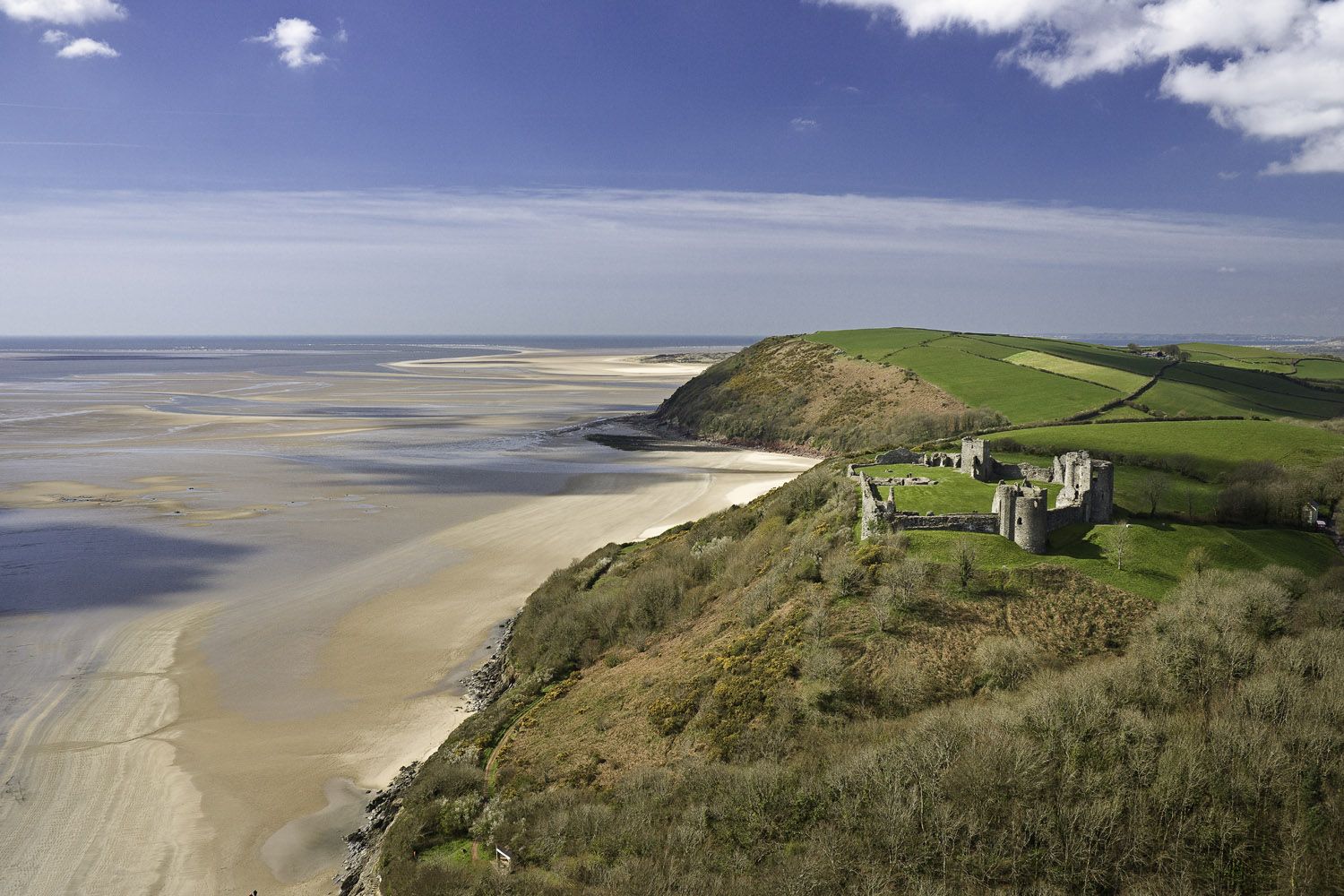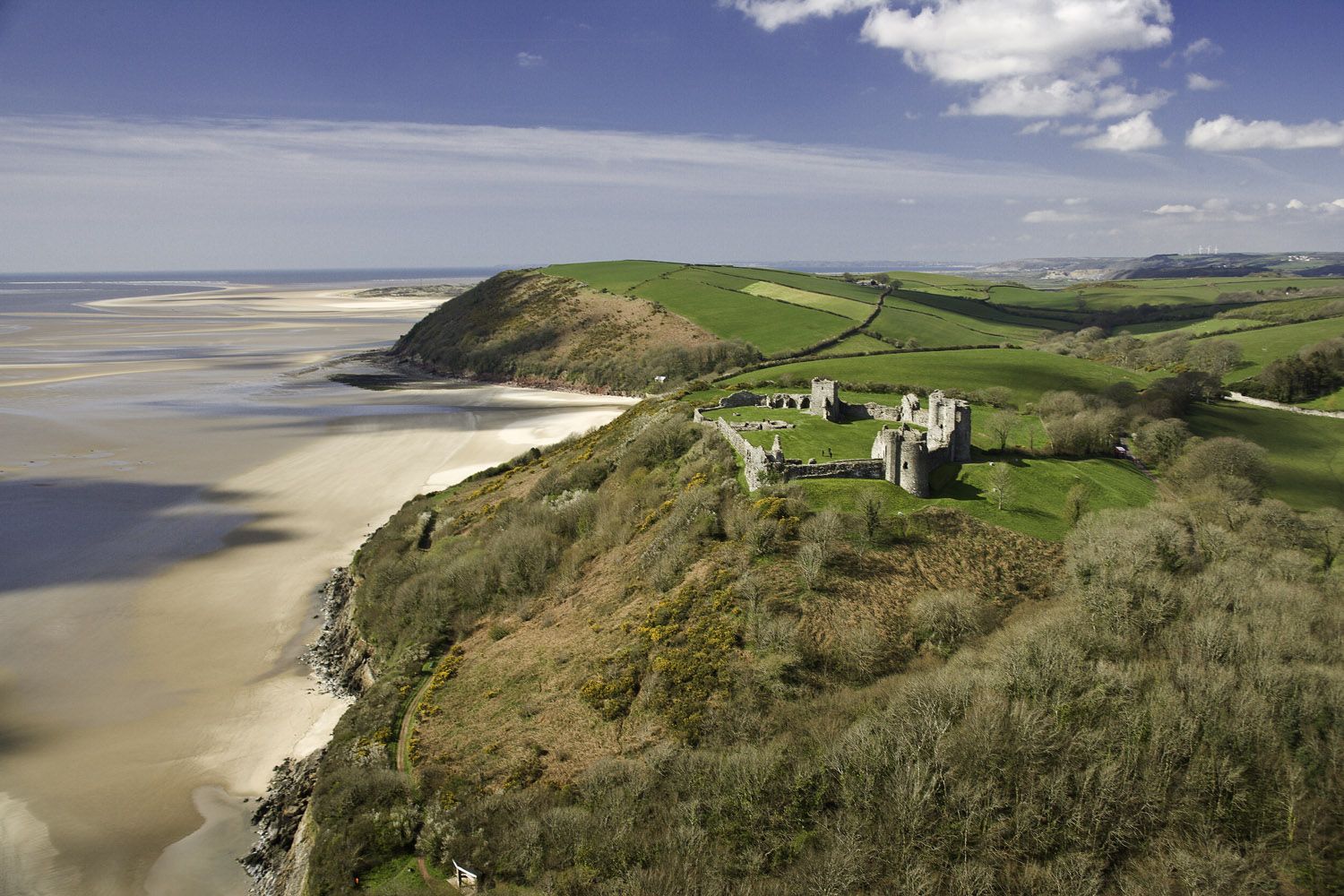About Llansteffan Castle
The castle of Llansteffan stands in a wonderfully picturesque location, crowning the top of a well-defined headland looking out over the broad sand-flats of the Tywi estuary. This strong hilltop position was first fortified in the prehistoric Iron Age and by the sixth century BC a double bank and ditch had been thrown across the neck of the headland to create a defensive promontory fort. It is hardly surprising, therefore, that the Norman invaders also recognised the defensive potential of the site.
The castle is thought to have been raised by Norman invaders soon after 1100. The castle created at this time, within the prehistoric defences, was of a form known as a 'ringwork'. It is not until 1146 that we have the first definite reference to Llansteffan. In that year, the Welsh Brut y Tywysogyon (Chronicle of the Princes) records that the castle was taken by Maredudd ap Gruffudd and his brothers, Cadell and Rhys, young princes of the royal house of Deheubarth (south-west Wales). By 1158, however, the district had been reoccupied by the Normans and the castle was generally in English hands thereafter.
From the end of the twelfth century, Llansteffan was held by William de Camville and his descendants. During the period that followed the castle had something of a chequered history: it was captured a number of times by the Welsh, and retaken by the English.
The male line of the Camvilles ended with the death of William III in 1338, and Llansteffan passed through marriage to the Penres family from Gower. The castle was to see a further brief spell of action during the revolt of Owain Glyn Dwr, when it was in Welsh hands for a period.
For the next two centuries, Llansteffan was held chiefly by the Crown, though it was repeatedly granted away. At the end of the fifteenth century, King Henry Vll (1485— 1509) conferred the castle on his uncle, Jasper Tudor (d. 1495), and it was perhaps at this time that modifications were made to the castle entrance. The gatehouse passageway was blocked up to provide extra accommodation and a simple entrance was constructed alongside.
In 1959 a deed of guardianship was entered into with Ministry of Works / Cadw, the historic environment service of the Welsh Government whilst remaining in the private ownership of the Plas Estate.
In 2016 we became the proud owners of Llansteffan Castle and Plas Farm…and a new chapter in the Castle’s history began.
The hilltop can only be approached on foot. A pathway leads up to the headland, where the climb is rewarded with superb views of the estuary and the surrounding countryside. At the top of the path, before entering the castle, several external features may be noticed. In the field to the west (which is private property) are the outer defensive bank and ditch of the medieval castle and, further to the west, the slighter banks and ditches of the much earlier Iron Age promontory fort. This can also be seen from the top of the great gatehouse tower.
For a full account of the history and description of the castle grounds please refer to the Llansteffan Castle Guide leaflet (Cadw, Welsh Government) which can be purchased at the Village Stores or from the Beach Tea Rooms.

